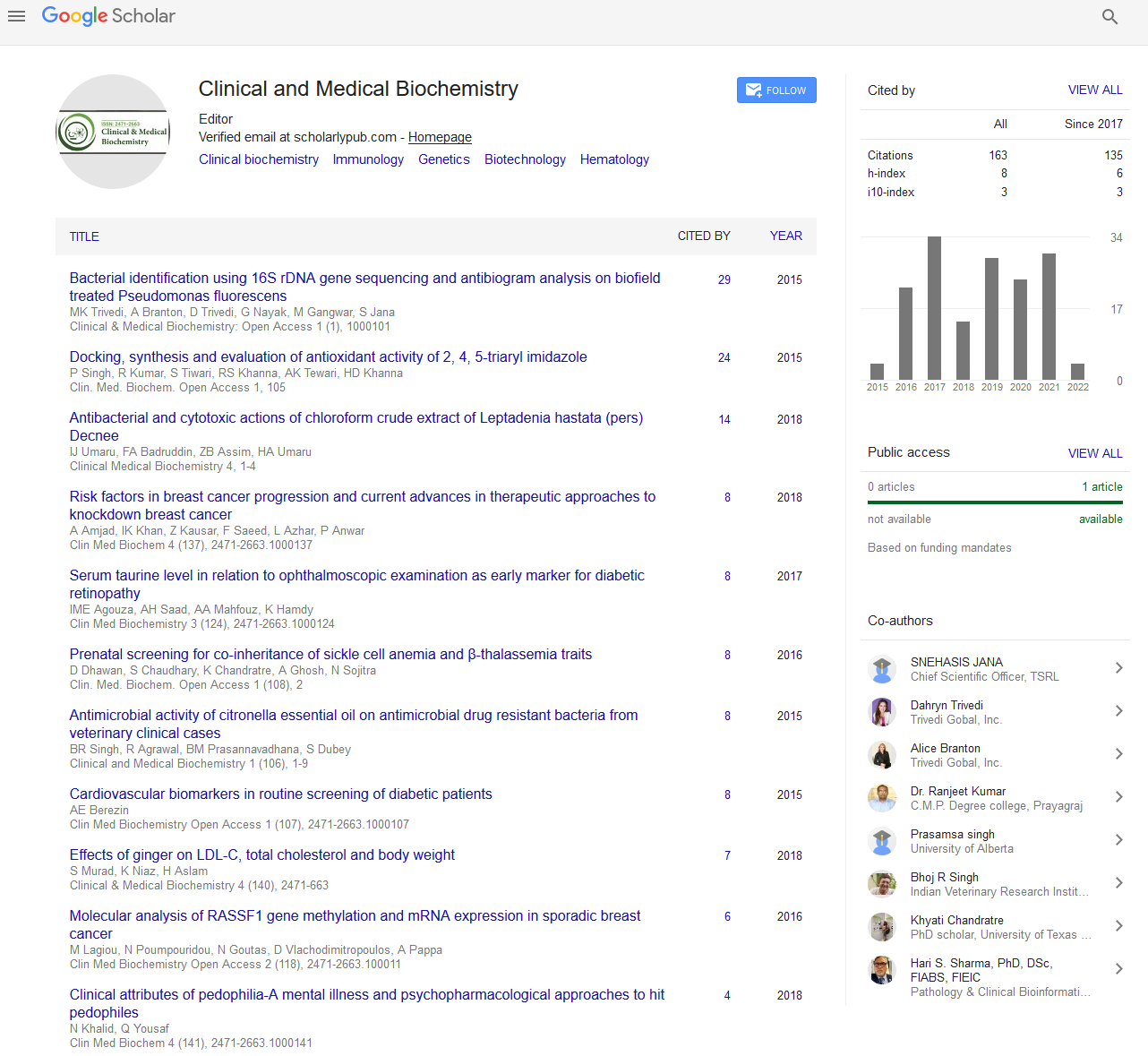Indexed In
- RefSeek
- Directory of Research Journal Indexing (DRJI)
- Hamdard University
- EBSCO A-Z
- OCLC- WorldCat
- Scholarsteer
- Publons
- Euro Pub
- Google Scholar
Useful Links
Share This Page
Journal Flyer

Open Access Journals
- Agri and Aquaculture
- Biochemistry
- Bioinformatics & Systems Biology
- Business & Management
- Chemistry
- Clinical Sciences
- Engineering
- Food & Nutrition
- General Science
- Genetics & Molecular Biology
- Immunology & Microbiology
- Medical Sciences
- Neuroscience & Psychology
- Nursing & Health Care
- Pharmaceutical Sciences
Abstract
Detection and Molecular Characterization of Circulating Tumor C ells (CTCs) in Patient with Metastatic Melanoma: A Potential Applica tion of Liquid Biopsy
Melanoma specific anti NG2 antibody conjugated with iron oxide nanoparticles that have been developed to isolate, detect, and culture CTCs from melanoma xenograft models and blood from patients with metastatic melanoma. The enrichment process involved, lysis of RBC from blood samples using RBC lysis buffer enhances the cancer cell recovery by immunomagnetic labeling and separation. Efficient cell capture was validated using fluorescently labeled cancer cells spiked into healthy human blood and clinical utility was demonstrated in specimens from patient with metastatic melanoma. The spiking experiment results with greater than 70% recovery in four sets of experimental. Spontaneous metastasis melanoma model, found that the number of CTCs increased during the tumor progression and correlated to lymphatic as well as lung metastasis development in vivo. CTCs were detected in 6 out of 7 patients’ blood samples that contained metastatic melanoma. The CTCs were positive for melanoma specific molecular markers such as S100, HMB45, MelaA, MITF and the CTCs were positive for anti NG2-Q-dot and pERK2-Q-dot staining. The BRAFV600e gene expression pattern resulted that the CTCs were expressed BRAFV600e similar to the control melanoma cells. The iron oxide antibody nanoparticle isolation method is a highly reliable and cost effective detection method of CTCs from patients with metastatic melanoma and CTCs cells can be culture for additional analytical studies or potential drug sensitivity testing.


